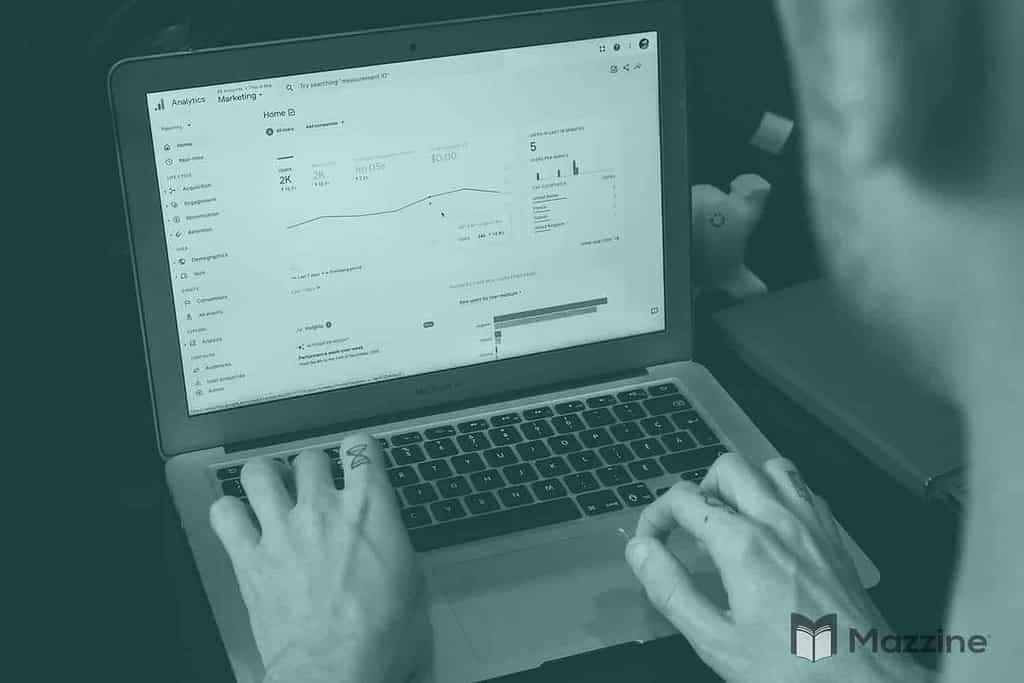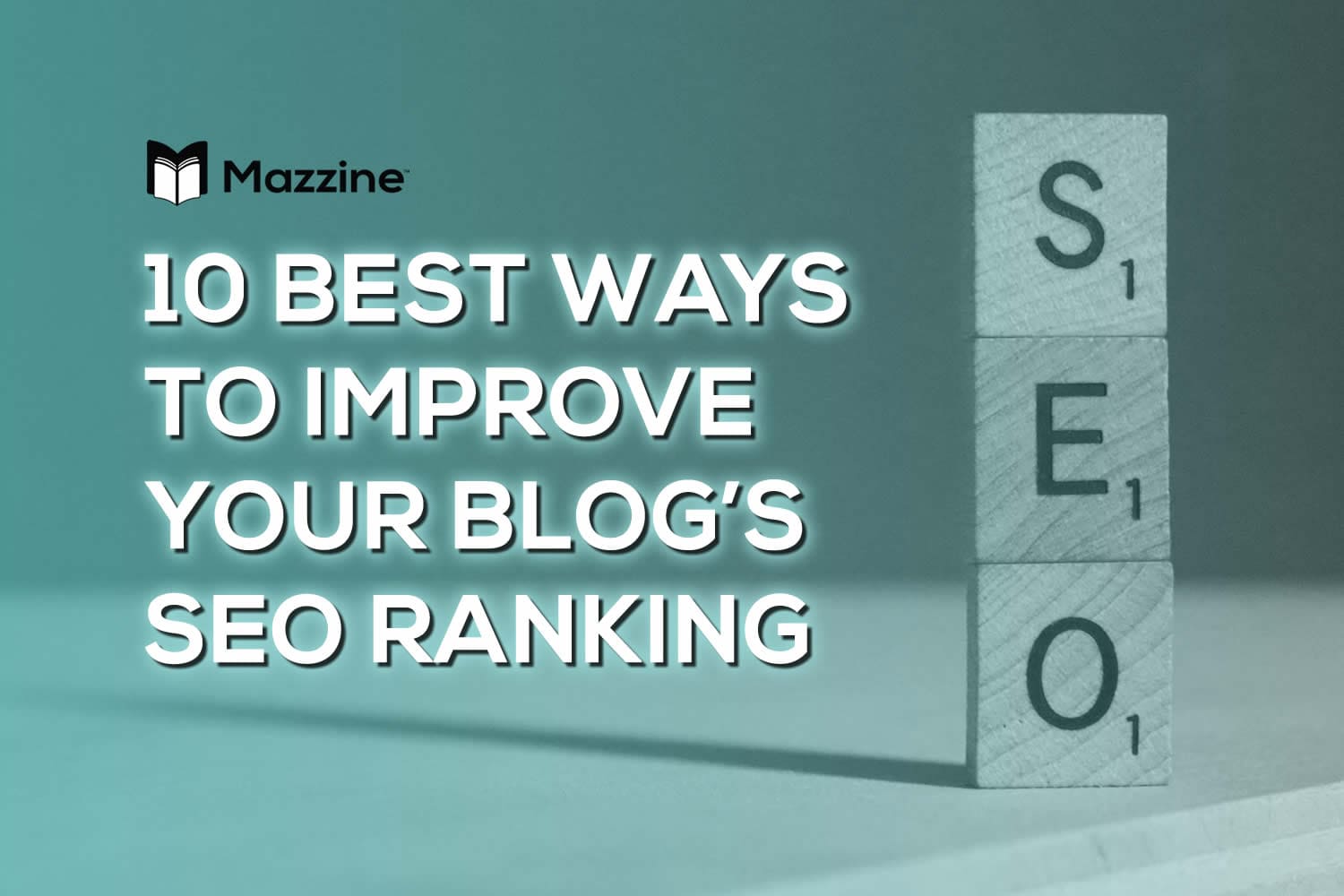Unlocking the Secrets to Boost Your Blog’s Visibility and Organic Traffic, We share the 10 best ways to improve your blog’s SEO ranking.
In the vast landscape of the internet, your blog’s success hinges on more than just compelling content—it needs to be discoverable. Search Engine Optimization (SEO) plays a pivotal role in blogging as it helps your blog rank higher on search engine results pages (SERPs) this enhances your blog’s visibility making it more visible to potential readers and attracting organic traffic.
“Successful SEO is not about tricking Google. It’s abut PARTNERING with Google to provide the best search results for Google’s users.”
– Phil Frost – Main Street ROI
In this guide, we’ll discuss the 10 best strategies to improve your blog’s SEO ranking.
Table of Contents
Understanding SEO Basics For Your Blog’s SEO Ranking

SEO isn’t an enigmatic force but rather a set of practices that make your blog more accessible to search engines. Understanding the basics of search engine optimisation is crucial to make it work effective for your blog content:
- Definition of SEO: SEO is the process of optimizing your blog to rank higher in search engine results, making it more likely to be discovered by users.
- Importance of Keyword Research: Keywords are the backbone of SEO. Use tools like Google Keyword Planner and SEMrush to identify relevant keywords for your niche. You can then plan your content around the keywords and phrases.
- On-Page and Off-Page Optimization: On-page optimization involves refining individual pages, while off-page optimization focuses on external factors like backlinks (these are links from other sites to yours).
10 Best Ways to Improve Your Blog’s SEO Ranking

According to consumer research a survey conducted by Hubspot revealed that 56% of consumers have made purchases from a company after reading their blog, and 10% of marketers who use their blog say it generatess the biggest return on investment (ROI), now those stats alone shows that not only blogging, but a blogs SEO is well worth the time and effort!
Let’s now look at the 10 ways you can improve your blog’s SEO ranking!
1. Conducting Comprehensive Keyword Research
“Think about what the user is going to type.”
– Matt Cutts – American Software Engineer
Keyword research is the process of identifying the words and phrases that people use in search engines. It can help you create content that matches what your audience is looking for.
Targeting the right keywords is paramount to SEO success:
- Importance of Targeting the Right Keywords: Choose keywords that align with your content and have reasonable search volumes.
- Tools for Effective Keyword Research: Leverage tools like Google Keyword Planner and other free keyword research tools for comprehensive keyword analysis.
- Long-tail vs. Short-tail Keywords: Strike a balance between broader short-tail keywords and more specific long-tail keywords for a well-rounded approach. Look for long-tail keywords that have a high search volume but low competition.
2. Optimizing On-Page Elements
Optimizing on-page elements in SEO involves fine-tuning key components like title tags, meta descriptions, header tags, and image alt text within individual web pages. This process enhances content relevance and quality, improving the blog’s appeal to search engines and users, and subsequently boosting SEO rankings.
Fine-tuning on-page elements is a critical aspect of SEO:
- Title Tags Optimization: Craft compelling and keyword-rich title tags for each page.
- Meta Descriptions and Their Impact: Write concise and engaging meta descriptions that encourage clicks.
- Header Tags (H1, H2, H3): Use header tags to structure your content, making it more readable for both users and search engines.
- Image Optimization with Alt Text: Describe images with relevant alt text to improve accessibility and SEO.
3. Creating High-Quality and Relevant Blog Content
Creating high-quality and relevant content is the cornerstone of effective blogging. It Involves producing material that is informative, engaging, and tailored to the interests of your target audience.
“Content is what the search engines use to fulfill user intent.”
– Dave Davies – Co-founder of Beanstalk Internet Marketing
Your blog post content should provide value, be well-researched and accurate, and resonate with the needs or queries of the target audience. This not only enhances user experience but also improves visibility in search engine results.
Content is king, but high-quality and relevant content reigns supreme:
- Emphasizing the Importance of Valuable Content: Prioritize content that solves problems, educates, or entertains your audience.
- Strategies for Creating Engaging Blog Posts: Incorporate storytelling, multimedia elements, and a conversational tone.
- Utilizing Multimedia Elements: Enhance your content with images, infographics, and videos to captivate your audience.
4. Improving Website Loading Speed
Improving website loading speed is vital for a positive user experience and enhanced SEO. A faster website reduces bounce rates and keeps visitors engaged.
Utilizing tools like Google PageSpeed Insights helps identify and address speed issues, ensuring optimal performance and improved search engine rankings.
User experience is a key factor in SEO, and website speed plays a crucial role:
- Impact of Loading Speed on User Experience and SEO: A slow website can lead to higher bounce rates and lower search engine rankings.
- Tools to Assess and Enhance Website Speed: Use tools like Google PageSpeed Insights to identify and address speed issues.
Ensure Your Website Loads Fast
- Minimize HTTP requests
- Optimize media filesfor size and quality,
- Leverage browser caching
- Minify CSS JavaScript, and HTML
5. Building Quality Backlinks to Your Blog
Backlinks are links from other websites to your blog. They can significantly improve your SEO ranking by indicating the credibility and relevance of your content.
“Internal links are HUGE for link building because you can control everything about them, from the location on the page to the anchor text.”
– Jon Cooper
Backlinks remain a powerful SEO factor:
- Importance of Backlinks for SEO: Quality backlinks from authoritative sources signal to search engines that your content is valuable.
- Strategies for Acquiring High-Quality Backlinks: Engage in guest posting, collaborations, and outreach to build a strong backlink profile.
- Guest Posting and Collaboration Opportunities: Seek opportunities to contribute guest posts to reputable websites in your niche.
6. Enhancing User Experience
Enhancing user experience involves optimizing your blog’s design and functionality to create a seamless and enjoyable interaction for visitors.
Prioritizing factors like mobile responsiveness, easy navigation, and overall usability contributes to longer visits and improved satisfaction, positively impacting both user engagement and SEO performance.
A user-friendly website design contributes significantly to SEO success:
- Importance of User-Friendly Design: A well-designed website improves user satisfaction and encourages longer visits.
- Mobile Responsiveness and Its Impact on SEO: Ensure your blog is optimized for mobile devices to cater to a growing mobile audience.
- Navigation and Site Structure Optimization: Streamline navigation and structure to make it easy for users and search engines to understand your content.
7. Regularly Updating and Maintaining Your Blog
Regularly updating your blog with fresh content can improve your SEO ranking. Search engines favour sites that are regularly updated as it indicates that the site is active and relevant.
Frequent updates and maintenance are crucial for sustained SEO success:
- Frequency of Content Updates: Regularly update your blog with fresh content to signal to search engines that your website is active.
- The Significance of Keeping Information Current: Remove or update outdated content to maintain relevance and accuracy.
- Checking and Fixing Broken Links: Broken links can harm user experience and impact SEO. Regularly audit and fix broken links.
8. Utilizing Social Media for SEO Boost
Social media can indirectly impact your SEO ranking. Sharing your content on social media can increase your online visibility and generate more traffic to your blog.
A company that builds a loyal social following has a built-in army to promote its content, day in and day out. That content will get shared, get links, and send social signals…all of which can’t be bad.
– Will Reynolds
Social media can amplify your blog’s reach and influence search engine rankings:
- Social Signals and Their Impact on SEO: Social shares, likes, and comments contribute to your blog’s authority in the eyes of search engines.
- Strategies for Promoting Blog Content on Social Media Platforms: Craft engaging social media posts and use relevant hashtags to extend your reach.
- Encouraging Social Sharing and Engagement: Prompt your audience to share your content, fostering a sense of community around your blog.
9. Paid Advertising
Paid advertising is a complementary strategy to boost your blog’s SEO ranking. Platforms like Google Ads and Social Media Ads allow targeted outreach, driving traffic and increasing visibility.
While not a direct SEO factor, paid advertising can amplify your online presence, creating a ripple effect by enhancing brand awareness and potentially attracting more organic traffic over time.
Investing in paid advertising complements your organic SEO efforts:
- Investment in Paid Advertising: Platforms like Google Ads and Social Media Ads allow you to target specific audiences and drive traffic to your blog.
10. Monitoring and Analyzing SEO Performance
Monitoring and analyzing SEO performance are vital steps in refining and improving your blog’s rankings. Tools like Google Analytics and Search Console help track key metrics, providing insights into user behaviour, traffic sources, and content performance.
Regular analysis enables bloggers to make informed adjustments to their SEO strategy, ensuring continuous optimization and long-term success in search engine rankings.
Regular analysis and adjustments are key to SEO success:
- Tools for Tracking SEO Performance: Leverage tools like Google Analytics and Search Console to monitor your website’s performance.
- The Importance of Regular Analysis and Adjustments: Stay informed about your blog’s performance and make data-driven adjustments to your SEO strategy.
- Setting and Measuring SEO Goals: Establish realistic goals and track your progress to ensure continuous improvement.
Conclusion
In conclusion, implementing these 10 best strategies will not only boost your blog’s SEO ranking but also enhance its overall visibility and organic traffic.
Remember, SEO is an ongoing process, so stay committed to refining your approach and adapting to evolving search engine algorithms. Here’s to climbing the ranks and making your blog a standout success!
Write For Mazzine™
We hope our blog for bloggers about blogging has been helpful and provided value to you.
Interested in writing for Mazzine? We would love to hear from you! – Join our community of writers from around the world. – Check out the guidelines on the Write for us page.
FAQ
How long does it take to see improvements in SEO rankings after implementing these strategies?
The timeline for SEO results varies, but generally, noticeable improvements may take a few weeks to months. Consistency in applying these strategies is key for long-term success.
How often should I update my blog content for optimal SEO?
Regularly updating your blog with fresh content is beneficial. Aim for consistent updates, whether it’s weekly, bi-weekly, or monthly, to signal to search engines that your website is active and relevant. Remember, SEO is a long-term strategy and it may take some time to see significant results. But with consistent effort and the right techniques, you can improve your blog’s SEO ranking.
Are there any free tools available for tracking SEO performance?
Yes, tools like Google Analytics, Google Search Console, and many others offer free versions with robust features to monitor and analyze your blog’s SEO performance.
How do I identify and fix broken links on my blog?
Regularly use online tools like Broken Link Checker to identify broken links, and then update or remove them to maintain a positive user experience and improve SEO.
How can improving my website’s loading speed enhance SEO?
A faster loading speed enhances user experience, which is a factor that search engines consider when ranking websites. Moreover, if your site loads quickly, visitors are more likely to stay longer and explore more, reducing your bounce rate.
What is user experience and why is it important for SEO?
User experience refers to how easy and enjoyable your website is to use. A positive user experience can lead to higher user engagement, satisfaction, and loyalty, all of which can contribute to better SEO rankings.


